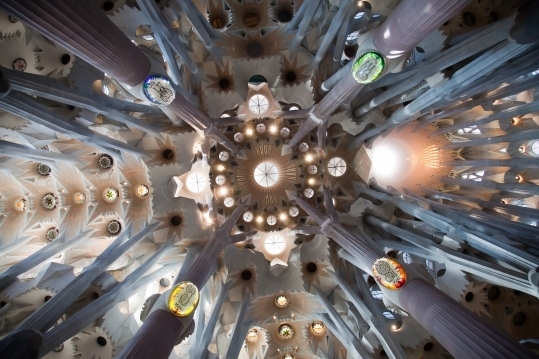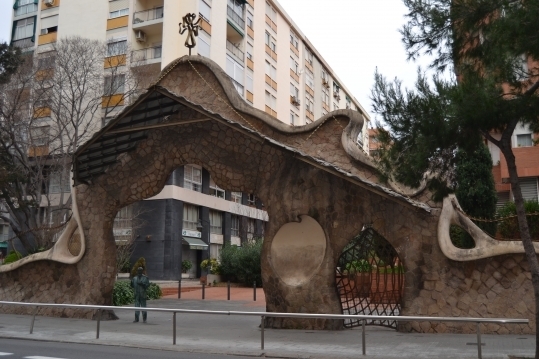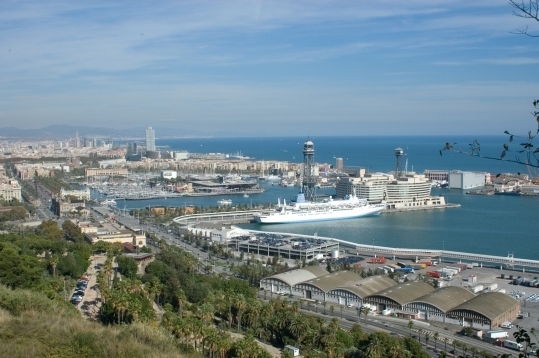|
1. Sagrada Família (visit around the interior)
This tour begins with a visit inside the Sagrada Família, a symbol of the city and Gaudí’s most ambitious project, considered to be unique in the world. Part of this structure has been declared World Cultural Heritage by UNESCO.
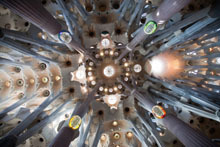
|
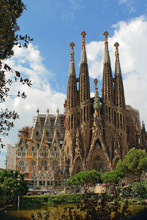 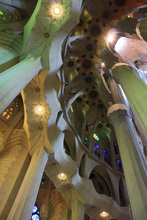
|
|
2. Avinguda Diagonal + Portal Miralles + Pavellons de la Finca Güell (stop)
Travel along this long avenue that bisects the city diagonally, stopping at Portal Miralles (a Historical-Artistic Monument of National Interest), another of Gaudí’s works, after which the tour continues on to see the spectacular gate of the former gatehouses of the Güell estate (another Historical-Artistic Monument of National Interest), the home to the Real Cátedra Gaudí documentation and research center.
|
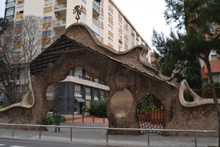
|
|
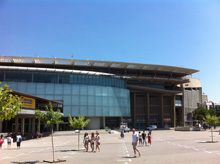
|
3. FC Barcelona stadium (exterior)
Stop off at the world-famous FC Barcelona stadium (Camp Nou), so you can take a photo of the outside of the stadium.
|
|
4. Plaça d’Espanya (driving around the square)
Continue to Plaça d’Espanya, one of the grandest plazas of the city, where you will see the two Venetian towers at the foot of Avinguda Reina María Cristina, the pavilions built for the 1929 International Exhibition and the impressive Palau Nacional, which currently houses the museum MNAC.
|

|
|
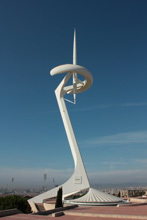 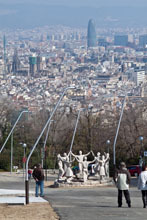
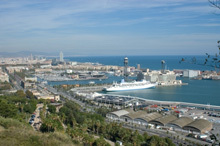
|
5. Montjuïc mountain (stop at the viewing point)
You will take a route around the mountain that covers all the main attractions, passing:
- The former Casaramona textile factory, a beautiful brick Modernista building designed by Josep Puig i Cadafalch.
- The Pavelló Mies van der Rohe, a building constructed for the 1929 International Exhibition.
- Poble Espanyol
- The Olympic Ring, constructed to host the sporting events of the 1992 Olympic Games. The complex consists of the Lluís Companys Olympic Stadium, the Palau Sant Jordi arena, the INEFC (National Physical Education Institute) and the University of Sport, the striking Santiago Calatrava telecommunications tower, and the Bernat Picornell swimming pool.
|
|
- Stop off at the Lluís Companys Olympic Stadium to visit the inside of the building. The stadium still maintains the original facade constructed in 1929, but the interior was entirely rebuilt for the 1992 Olympic Games.
- Stop at the Mirador del Alcalde belvedere, from where you will have a beautiful panoramic views over the city.
|
|
6. Plaça del Portal de la Pau (Columbus Monument)
Continue on to this square, which is overlooked by one of the city’s most famous landmarks, the monument dedicated to Columbus. This is the car drop-off point.
|
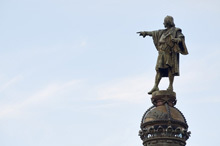
|
|

|
7. A walk along Las Ramblas and free time for lunch.
Then wander down Las Ramblas, the emblematic boulevard that is a melting pot for all kinds of cultures and traditions.
|
|
8. Palau Güell or Casa Milà (La Pedrera) or Casa Batlló (visiting the interior of whichever one you choose)
|
|
|
|
|
- Palau Güell (Gaudí)
This is one of the first buildings designed by Antoni Gaudí. The building is entirely Modernista in style and is considered one of Catalonia’s architectural and cultural gems. It is a UNESCO World Heritage Site.
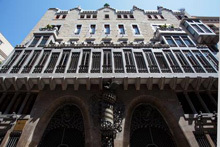
|
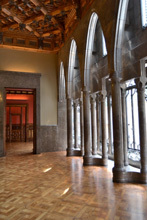 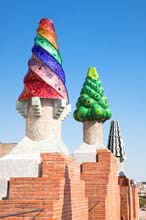
|
|
- Casa Milà "La Pedrera" (Gaudí)
|
|
|
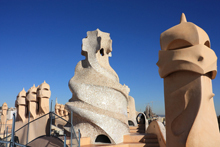
|
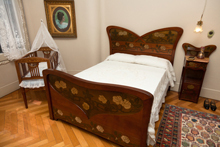
|
|
- Casa Batlló (Gaudí)
|
|
|
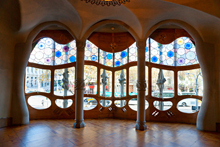
|
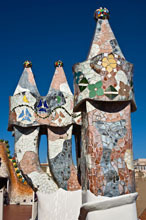 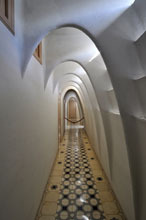
|
|
9. Plaça de Catalunya
Then walk to Plaça de Catalunya, the square that marks the center of the city.
|
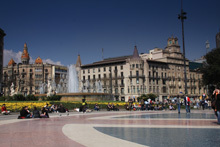
|
|
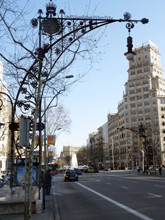 
|
10. Passeig de Gràcia
Continue up along Passeig de Gràcia, Barcelona’s best-known boulevard, which boasts a large number of neo-Gothic and Modernista buildings that you will pass as you walk by.
|
|
11. Facade of Casa Lleó i Morera, by Lluís Domènech i Montaner
This is a large stone building decorated with numerous Modernista decorative elements that make it very impressive.
12. Facade of Casa Amatller, by Josep Puig i Cadafalch
This building has a pretty facade with floral motifs and large neo-Gothic windows. You will see that the railings on the balconies and the doors are exquisitely delicate and the building has a typical ridged roof inspired by Dutch houses. It has been declared a Historical-Artistic Monument of National Interest.
|
 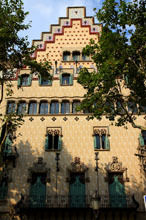
|
|
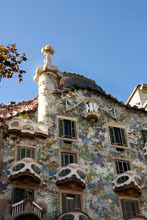 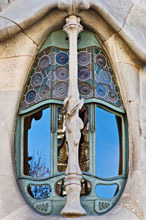
|
13. Facade of Casa Batlló, by Gaudí
Casa Batlló is Gaudí’s most fantastical work, popularly known as the Carnival house. It has a captivating facade and the building is rich with fascinating architectural details. The building was declared a UNESCO World Cultural Heritage Site.
|
|
14. Facade of Casa Milà (La Pedrera), by Gaudí
To finish the tour, see Casa Milà, commonly known as La Pedrera, which a spectacular avant-garde facade dominated by curved lines reminiscent of the swell of the sea. The building was declared a UNESCO World Cultural Heritage Site.
|
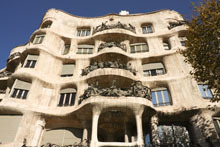
|
